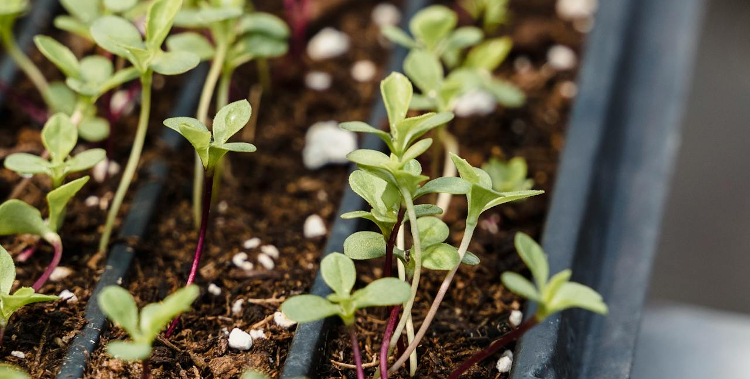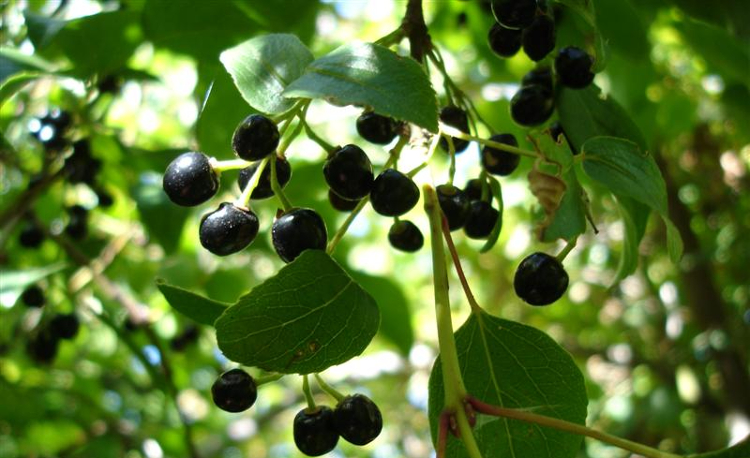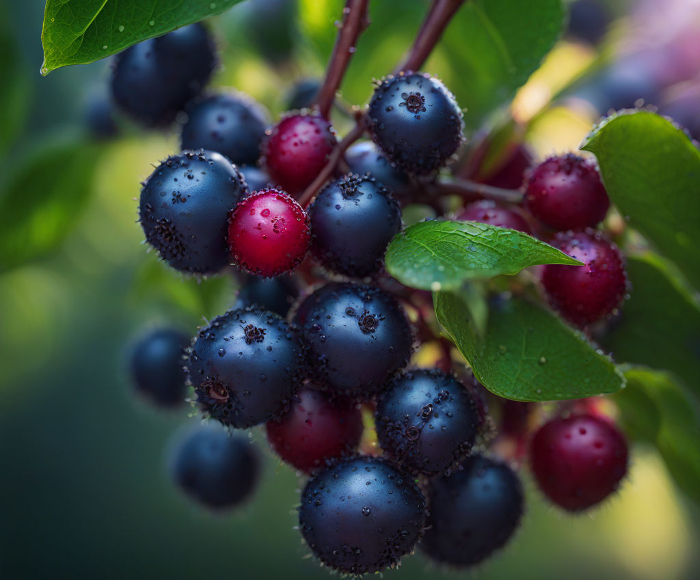When I first learned about where maqui berries grow, I was fascinated to discover their origins in the lush Valdivian rainforest and southern Argentina. I imagine many of us feel a deep curiosity and appreciation for these unique berries that thrive in such specific conditions.
–> Special Offer: $20 off Glucoberry Today – Check Availability <–
I remember reading about a small farm in Chile where the farmers are dedicated to growing these antioxidant-rich berries in an organic and sustainable way. This connection to their natural habitat really makes me appreciate the care and effort involved in cultivating such remarkable fruit.

Introduction to Maqui Berries
Overview of Maqui Berries
Native Origin Maqui berries, also known as Chilean wineberries, are indigenous to the Valdivian rainforest in Chile and southern Argentina. They have been traditionally used by the Mapuche people for their health benefits and as a food source.
Botanical Classification These berries belong to the Elaeocarpaceae family, under the scientific name Aristotelia chilensis. Their deep purple color and small size make them easily recognizable.
Common Names Apart from “maqui berries” and “Chilean wineberries,” they are sometimes referred to simply as “maqui.”
Geographic Distribution
Native Habitat
Valdivian Rainforest The Valdivian rainforest provides the perfect environment for maqui berries to thrive. This temperate rainforest is known for its high rainfall and moderate temperatures, creating an ideal habitat for these berries.
Southern Argentina In addition to Chile, maqui berries are also found in the adjacent regions of southern Argentina, contributing to the biodiversity of the area.
Current Growing Regions
Global Spread and Cultivation With increasing recognition of their health benefits, maqui berries are now being cultivated in various parts of the world, including North America and Europe, though the highest quality berries still come from their native regions.
Comparison with Other Berry-Growing Regions Compared to other popular berries, maqui berries require specific climatic conditions that are not as widely available, making their cultivation more specialized.
Climate and Soil Requirements
Climate Needs
USDA Zone 8a Suitability Maqui berries are cold-hardy plants suitable for USDA zone 8a, which means they can tolerate temperatures down to 10°F (-12°C).
Temperature Range and Rainfall These plants thrive in moderate temperatures with ample rainfall, similar to their native Valdivian rainforest conditions.
Soil Preferences
Soil Type and pH Levels Maqui plants prefer well-drained, slightly acidic to neutral soils (pH 5.5-7.0).
Nutrient Requirements Rich, organic matter is beneficial for their growth, and regular composting can enhance soil fertility.
–> Special Offer: $20 off Glucoberry Today – Check Availability <–

Plant Characteristics
Physical Description
Evergreen Shrub Features Maqui berries grow on evergreen shrubs that can reach up to 15 feet in height. These shrubs are characterized by their multiple thin trunks and dense foliage, which remain green throughout the year.
Typical Height and Growth Habits The maqui plant grows rapidly, making it a vigorous addition to any garden. Its bushy nature provides a lush, green backdrop, and its resilience to various conditions makes it a hardy plant.
Fruit-Bearing Cycle
Flowering and Fruiting Periods Maqui berries typically flower in the spring, producing small, white flowers. By late summer to early autumn, these flowers transform into deep purple berries.
Berry Characteristics The berries are small, dark purple, and have a slightly sweet, tart flavor. They are packed with nutrients and are known for their high antioxidant content.
Cultivation Practices
Planting Guidelines
Propagation Methods Maqui berries can be propagated from seeds or cuttings. Many amateur growers find starting with cuttings easier, as it ensures you get a plant with the desired characteristics.
Spacing and Depth When planting, make sure to space the shrubs about 3-4 feet apart to give them room to grow. Plant them at a depth where the root ball is just covered by soil.
Maintenance
Watering and Fertilizing Regular watering is essential, especially during the first year. When I tried growing Maqui I watered mine deeply once a week. Fertilize with a balanced, organic fertilizer to encourage healthy growth. But don’t overdo it.
Pest and Disease Management While relatively hardy, maqui plants can occasionally be affected by pests and diseases. Regular inspections and using natural pest control methods can help keep these issues at bay.
–> Special Offer: $20 off Glucoberry Today – Check Availability <–

Uses and Benefits
Nutritional Profile
Antioxidant-Rich Berries Maqui berries are renowned for their high levels of antioxidants, particularly anthocyanins, which give them their deep purple color. These antioxidants help fight free radicals in the body, contributing to overall health.
Key Nutrients and Vitamins In addition to antioxidants, maqui berries are a good source of vitamins A and C, calcium, and iron. These nutrients support various bodily functions, from immune health to bone strength.
Health Benefits
Medicinal Properties Historically, the Mapuche people used maqui berries for their medicinal properties. The berries are known to have anti-inflammatory and antibacterial effects, which can help in reducing inflammation and fighting infections.
Impact on Well-Being Consuming maqui berries regularly can contribute to improved heart health, better skin, and enhanced energy levels. For me, adding them to my diet has made a noticeable difference in my daily vitality.
Culinary Uses
Common Recipes Maqui berries can be used in a variety of recipes, such as smoothies, jams, and desserts. Personally, I love adding them to my morning yogurt for a nutritious boost.
Popular Products The berries are also available in various forms, including powders, supplements, and juices. These products make it easy to incorporate the health benefits of maqui berries into your diet, even if fresh berries are not available.
The Future of Maqui Farming
Trends and Opportunities
Growing Popularity Maqui berries are gaining popularity globally due to their high antioxidant content and health benefits. This surge in demand presents numerous opportunities for farmers and entrepreneurs alike.
Sustainable Practices With increasing awareness of environmental impact, many maqui farmers are adopting sustainable farming practices. This includes organic cultivation methods, reducing pesticide use, and promoting biodiversity.
Market Expansion The market for maqui berry products is expanding, from dietary supplements to beauty products. This diversification opens new avenues for businesses to explore and cater to health-conscious consumers.
–> Special Offer: $20 off Glucoberry Today – Check Availability <–

Sustainable Practices
Organic Cultivation Organic farming practices not only benefit the environment but also produce higher quality, chemical-free berries. Farmers are turning to natural fertilizers and pest control methods to maintain healthy crops.
Environmental Impact Sustainable maqui farming helps preserve the natural ecosystems of the Valdivian rainforest and southern Argentina. By reducing deforestation and soil degradation, these practices contribute to the long-term health of the planet.
Conclusion
A Bright Future for Maqui Berries
The future of maqui farming looks promising, with growing demand and a shift towards sustainable practices. As more people discover the health benefits of these antioxidant-rich berries, the industry is set to flourish.
Why Grow Your Own?
When you can get concentrated benefits in supplement form …
Discover the all-natural benefits of maqui berries today and improve your well-being holistically. Visit TheWorldHealth.org to get a $20 discount on one of the best-selling maqui berry products, made with the finest ingredients to support your health from the inside out.
–> Special Offer: $20 off Glucoberry Today – Check Availability <–
If you enjoyed this article then please share, subscribe and do the thang!
Thanks for reading!
The Very Berry Team 🙂
**Disclaimer:** The content provided on this page is for informational purposes only and is not intended as medical advice, diagnosis, or treatment. The author of this page is not a medical professional. Always seek the advice of your physician or other qualified health provider with any questions you may have regarding a medical condition. Never disregard professional medical advice or delay in seeking it because of something you have read on this page.
Leave a Reply